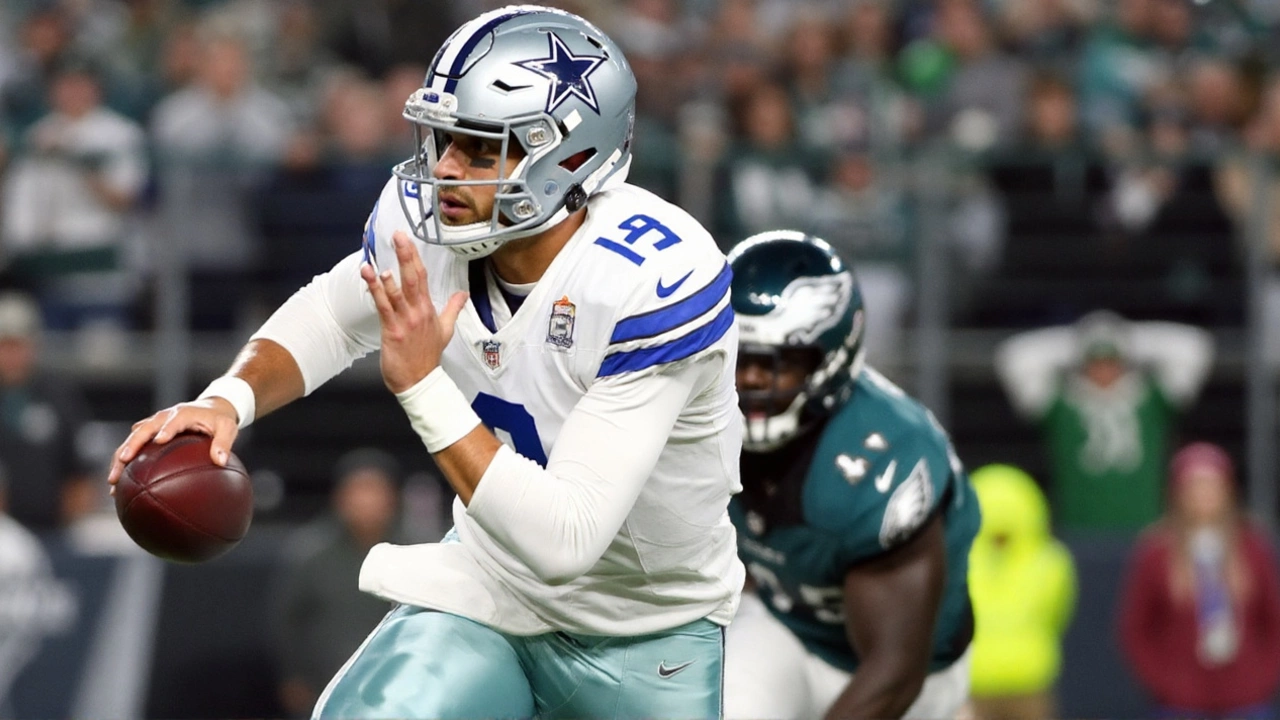NFL TV ratings set to surge as frontloaded 2025 schedule packs early primetime punch

Early fireworks, bigger windows, and a clear ratings play
The NFL didn’t hide its intent. It loaded the first weeks of the 2025 season with the kind of matchups that usually get spread out: rivalry games, brand-name teams, and primetime inventory that hits every corner of the country. The goal is obvious—push NFL TV ratings higher, sooner, and across more screens.
Week 1 sets the tone: 272 games overall, and a banner-raising opener in Philadelphia with the Eagles hosting the Cowboys. That pairing does two things at once—celebrates the champions and guarantees a massive draw with Dallas involved. Kansas City, which delivered four of last season’s five most-watched games, again leads the league in primetime slots. The Cowboys remain the ultimate ratings magnet. The Eagles stay near the top tier with multiple high-visibility windows.
The timing is smart. Football demand is already roaring. Ohio State’s 14–7 win over Texas just delivered 16.62 million viewers on Fox—its most-watched Week 1 college game on record—with a peak of 18.57 million. Total Week 1 college viewing is tracking past 20 billion minutes, up from the 2023 high of 14.5 billion. If college football lights the fuse, the NFL plans to catch the blast.
There’s also scale beyond the U.S. The league’s biggest international slate ever adds early Sunday morning kickoffs for American audiences, stacking three clean viewing windows: an early game overseas, the traditional Sunday afternoon slate, and a primetime headliner. London and Germany remain key hubs, and Spain joins the rotation in 2025—part of a broader push to make the NFL a weekly global appointment.
“Frontloaded” isn’t just about who plays; it’s about when, where, and how you watch. The schedule leans into every advantage the league has built over the past few years—flexible scheduling, multi-platform reach, and morning-to-night football on the weekends—so casual fans get hooked early and stay.
- Opening weeks packed with rivalry and brand-name matchups to create early must-watch moments.
- Heavy primetime exposure for Kansas City, Dallas, and Philadelphia to anchor national windows.
- International games that extend Sundays into three distinct viewing blocks.
- Flexible scheduling earlier and more often, reducing late-season duds in national slots.
Streaming muscle meets legacy TV—and the ad market follows
This season’s plan depends on reach. The NFL’s new normal is traditional TV and streaming working side by side, not fighting for attention. Broadcast and cable still deliver massive live audiences. Streaming widens the funnel with younger viewers, cord-cutters, and fans who watch on phones and connected TVs. Think Thursday nights on a major streamer, Sunday Ticket on a vMVPD, national windows on broadcast, and select digital exclusives for big tentpole weeks. The mix is deliberate.
Measurement has finally caught up to the strategy. With Nielsen and internal network reporting now tallying out-of-home and connected TV viewing more consistently, the NFL can actually see (and sell) the full audience. That’s crucial for advertisers, who want proof that streaming impressions aren’t just add-ons but part of the main event.
The ad market likes what it sees. Football is the safest buy in TV, and early-season certainty is gold. Categories that leaned in last year—insurance, tech, sports betting, automotive—get premium placements in September and October, when reach and frequency are easiest to lock down. A strong front half also means fewer make-goods later, which stabilizes pricing across the schedule.
There’s a second wave built in, too. The league has leaned into appointment viewing beyond Sundays: Thursday nights remain a national platform, Monday doubleheaders and staggered start times return, and a Black Friday showcase is back on the calendar. Each creates its own promotional runway and puts more big games in slots where viewers know exactly where to find them.
Preseason numbers suggest the strategy is catching. NFL Network averaged 2.1 million viewers for its Week 1 preseason telecasts—up 44% over last year and an all-time high for the channel’s preseason coverage. Preseason isn’t a perfect predictor, but it’s a clean signal that curiosity is high and screens are already tuned to football.
There are risks. Injuries can gut a primetime run. Blowouts drain second-half audiences. Fragmented streaming log-ins can frustrate casual fans on big nights. But the schedule has safety valves. Cross-flexing lets the league move games between networks. Primetime flex policies kick in earlier, keeping national windows strong. International morning games give Sundays more oxygen if the afternoon slate thins out.
On the fan side, fantasy and betting keep engagement sticky. RedZone turns even a bad local game into a background soundtrack for seven hours. Social video recirculates key moments instantly, letting the league sell a big play twice: once as live TV, again as a viral clip that pushes viewers back to the next window.
Put it all together and the logic is tight. Stack the front of the season with heavyweight matchups. Spread games across broadcast, cable, and streaming so no audience is left out. Use international mornings and primetime heavies to fill the day. Flex out the misses. Then let momentum carry into the holidays and the playoff race.
The NFL has built a September that feels like midseason already. If the early weeks hold their form—if the Eagles’ banner night delivers, if the Chiefs keep their national pull, if Dallas does what Dallas always does—ratings won’t just rise. They’ll set the pace for everything else on TV, again.

